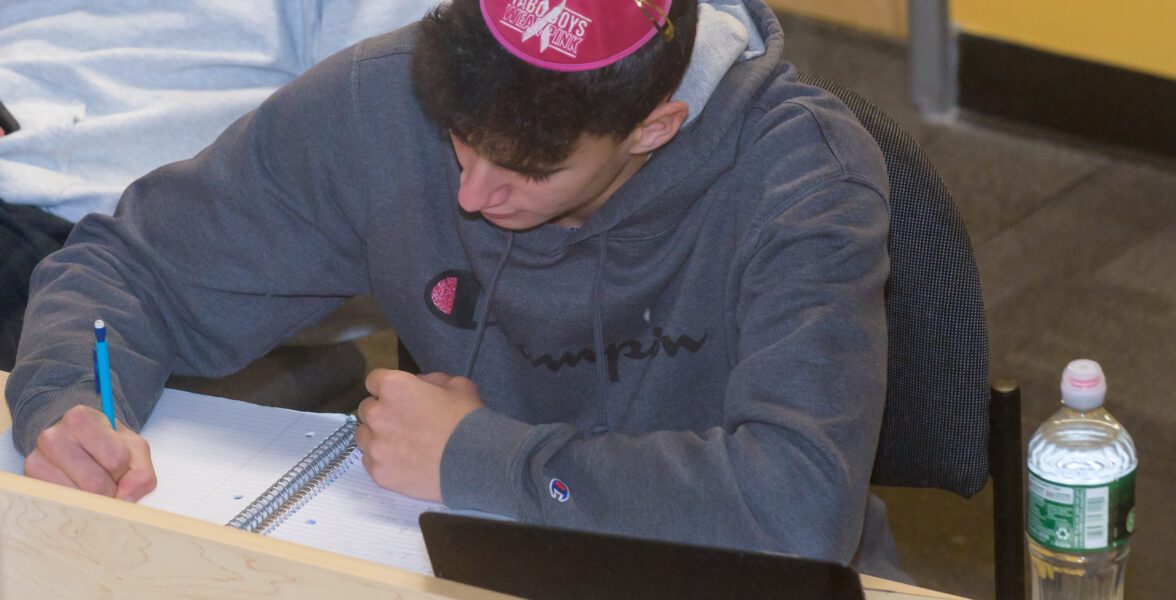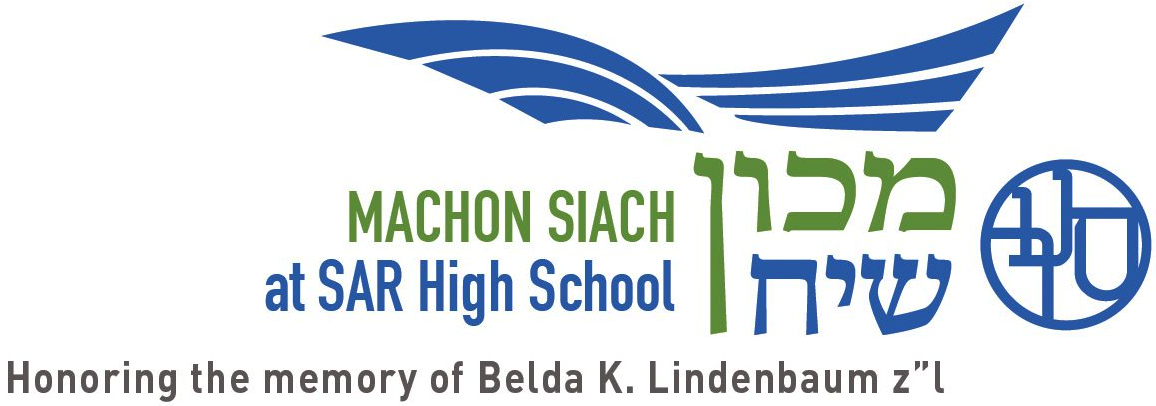
Teaching History: Clarifying by Complicating
My long walk home from shul along Eastern Parkway is dotted with landmarks including the iconic Brooklyn Museum. While passing the museum with my seven-year-old son last spring, he asked why the “O” of the oversized OY/YO sculpture had been draped in blue fabric, and I explained that this was done to show solidarity with Ukraine as its people defended themselves against the Russian invasion. Zeke responded with a question I did not anticipate: “But, Aba, doesn’t Ukraine hate Jews?”
As a history teacher and a father, I felt the pressure of responding to his question with honesty and nuance. I tried to clarify that no one person or group holds a historical monopoly on hatred of ‘the other’ in general or of Jews in particular. In fact, there are two lessons I want to impress both on Zeke and on my SAR High School students. The first is that though there were people in Eastern Europe who hated and tormented the Jews, not all people in that region were always unfriendly to Jews. The second is that the hostility faced by the Jews of Eastern Europe is inextricably wrapped up in the comparative success and relative stability that Jewish communities experienced in this region over many centuries.
Zeke seemed generally satisfied with my response or, equally likely, quickly shifted his interest to the possibility of another lollipop or a shoulder ride. I, on the other hand, was left unsettled, pondering how I can communicate such nuance to my students. As the grandchild of German Jews who escaped the only home they had ever known in 1937 and likely considered themselves more German than Jewish for most of their lives, I am intimately familiar with the intertwining of Jewish success and suffering. Understanding the Russia-Ukraine War against the backdrop of Jewish history challenges us to reach a nuanced understanding, as the conflict has been rife with selective readings and intentional distortions of the history of the region and its Jews.
The great scholar of nationalism Benedict Anderson highlighted a paradox of modern national identity: those proposing supposedly new modes of political identification also rely on longstanding cultural themes if not full-blown claims of ancient authenticity. For Ukraine, this old/new construction of modern national identity has elevated iconic villains of the Jewish people, most prominently the Cossack leader Bohdan Khmelnytsky. I recall hearing of Khmelnytsky’s horrors at some point early on in my years of Jewish education long before I studied the history of Eastern Europe as a graduate student.
Indeed, Khmelnytsky led an uprising in the mid-1600s that killed tens of thousands of Jews. However, the Jews living at that time in what is now Ukrainian territory were actually the secondary target of Khmelnytsky’s offensive. Khmelnytsky and his Cossack followers rebelled primarily from a sense of disenfranchisement at the hands of the dominating Polish nobility. The Jews of the Polish-Lithuanian Commonwealth had been tax collectors for the absentee landlords among the Polish nobility, giving these Jews the relative economic security that comes with connection to a powerful elite. Yet they lacked the physical security and police power that come with membership in that elite.
This inflection point also connects to broader historical exploitations of the current moment, for Khmelnytsky was able to mount his uprising with support from the nascent Tsardom of Russia. In a Ukrainian nationalist reading of this episode, Khmelnytsky accepted the assistance of those who had a distant connection than the Cossacks and an even weaker connection to the legacy of the great medieval kingdom of Kievan Rus’. Vladimir Putin has invoked a Russian nationalist reading of this episode to justify Russia’s current aggression–claiming that then, as now, Russia is trying to bring its ‘little brother’ back into the fold. Many contemporary Ukrainians feel that such an understanding ‘robs’ Ukraine of its national identity by ignoring the fact that Kievan Rus’ was once centered on that same land and that the Cossacks’ revolt was motivated by Polish discrimination rather than unity with Russia.
Like xenophobia and Jew-hatred throughout history, selective historical understanding is hardly the exclusive province of one side in the current conflict in Eastern Europe. Ukrainian President Volodomyr Zelenskyy radically overstated the degree to which Ukrainians helped Jews during the Holocaust. While there are Ukrainians among the “righteous gentiles,” to imply that they were the rule rather than the exception is radically inaccurate. At the same time, most Ukrainians during WWII acted towards Jews and others as most other peoples of the time did: with indifference or hostility based on their best chances of survival or, in the case of national activists like the Ukranian national hero and notorious wartime murderer of Jews and Poles Stephan Bandera, with singleminded focus on creating an ethnically homogeneous Ukrainian state.
When we look back at history–and all the more so at the history of the Jews–it is easy to treat people and periods as monolithically good or evil. But the truth always lies somewhere in the middle. Just as the modern country of Ukraine was once home to the Khmelnytsky massacres, so too was it the birthplace of Hasidism. This land that played host to some of the greatest loss of Jewish life in the 20th century was also the locus of ground-breaking 19th-century Jewish thought, including the flowering of modern Yiddish culture, the revolutionary ideals of Bundism, and the development of contemporary Jewish nationalism and the Zionist movement.
It is in this vein that, as an SAR history teacher, I strive to explain the past not by highlighting its simplicity but by encouraging students to embrace its complexity. Our students grow to understand that historical ideas and events are not merely informed by their contradictions but defined by them. For example, we explore how Zionism is, at its core, predicated on a fundamental rejection of millennia-old Jewish political and communal strategies by merging the ancient sense of connection to Eretz Yisrael with the modern Western notion of nationalism. We see how the anti-imperialist independence movements of the contemporary Middle East, a region ruled by successive empires since the dawn of civilization, were informed by a notion of nationalism to which they were first exposed… by the European empires that dominated them! Through such teaching, our students see how complexity and clarity are two sides of the same coin; they see how deeply revered social and religious traditions are inextricably defined both by their ancient roots and by how we interpret them in the modern world. With this, we aim to help students develop the middot of openness, humility, and wisdom that lie at the core of our school’s mission and that will enable them to embrace the complexities and contradictions of living as a Jew in the modern world.



